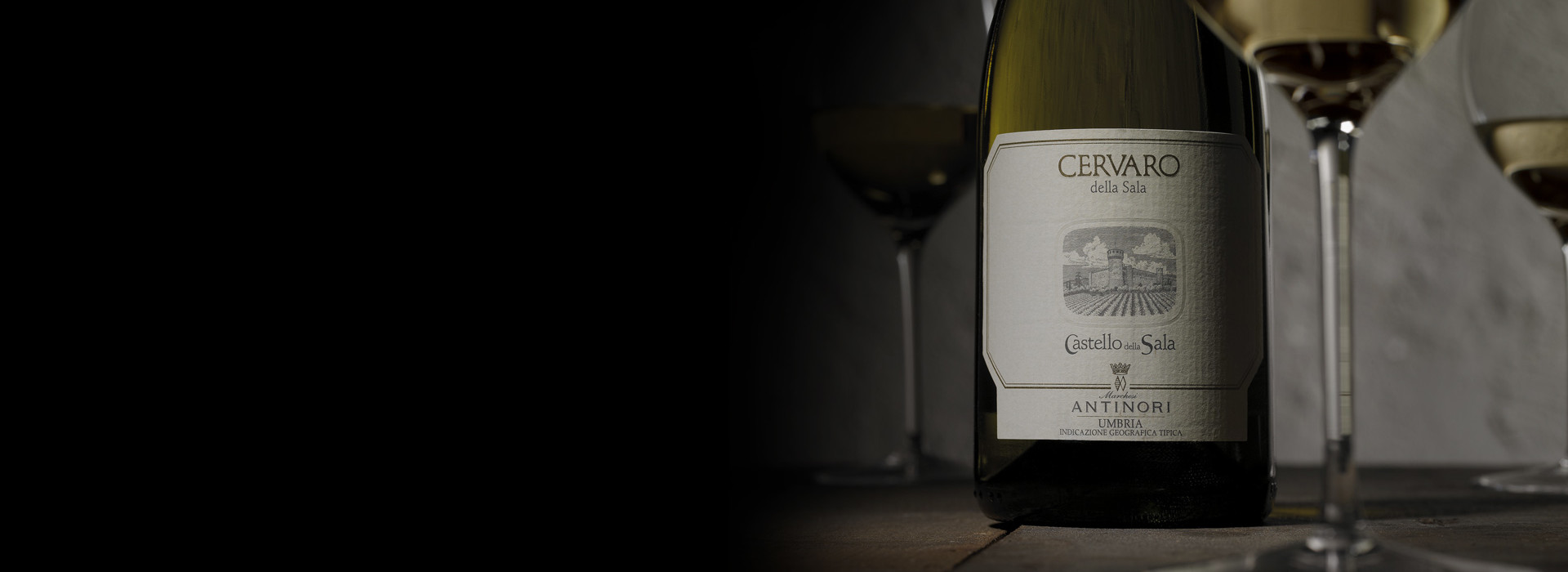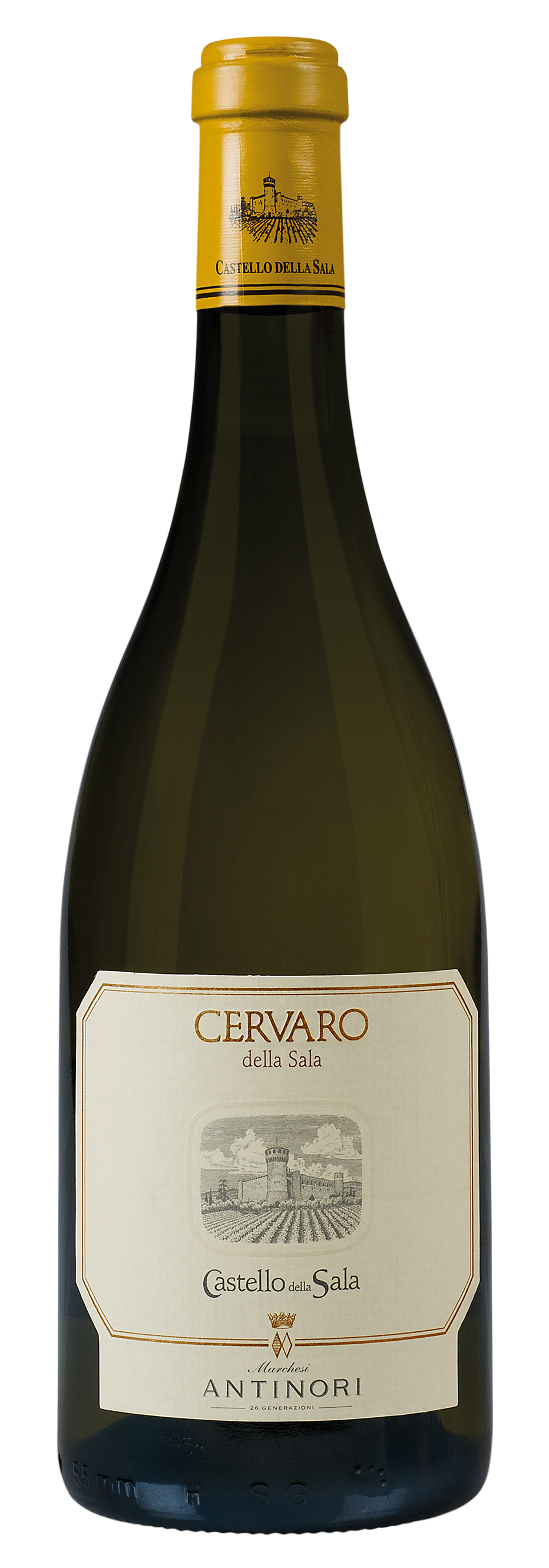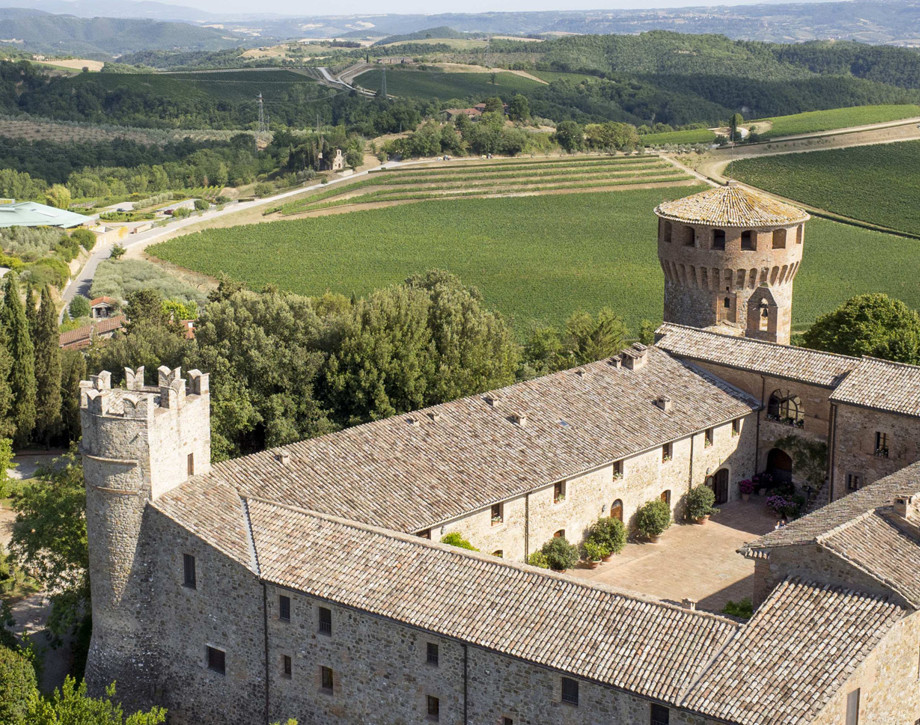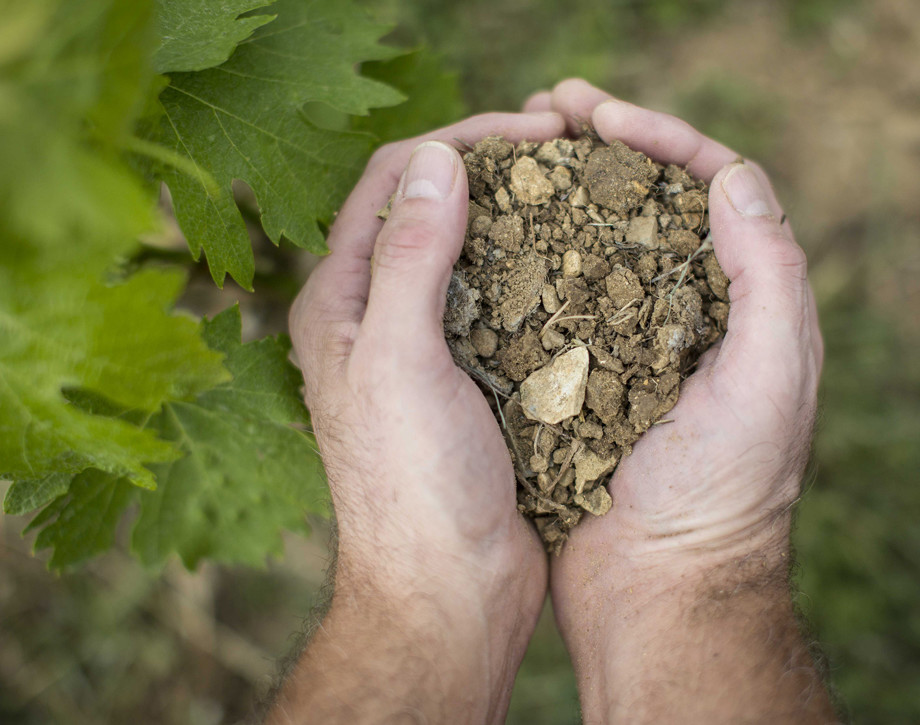Cervaro della Sala

The Wine
The name Cervaro comes from the noble family that owned Castello della Sala during the 14th century, Monaldeschi della Cervara. A blend of Chardonnay grapes and a small quantity of Grechetto make a wine that can age over time and represent the elegance and complexity of this unique estate. Cervaro della Sala is one of the first Italian white wines to have malolactic fermentation and aging take place in barriques. The first vintage of Cervaro to be produced was the 1985 vintage.
Historical Data
The name Cervaro comes from the noble family that owned Castello della Sala during the 14th century, Monaldeschi della Cervara. A blend of Chardonnay grapes and a small quantity of Grechetto make a wine that can age over time and represent the elegance and complexity of this unique estate. Cervaro della Sala is one of the first Italian wines to have malolactic fermentation and aging take place in barriques. The first vintage of Cervaro to be produced was the 1985 vintage.

The Wine
The name Cervaro comes from the noble family that owned Castello della Sala during the 14th century, Monaldeschi della Cervara. A blend of Chardonnay grapes and a small quantity of Grechetto make a wine that can age over time and represent the elegance and complexity of this unique estate. Cervaro della Sala is one of the first Italian white wines to have malolactic fermentation and aging take place in barriques. The first vintage of Cervaro to be produced was the 1985 vintage.

In Honor of the Monaldeschi della Cervara Family
The wine’s name honors the Monaldeschi della Cervara family who was the historic owner of Castello della Sala in the XVI century.
The Barrique
Cervaro della Sala was one of the first Italian white wines to have malolactic fermentation and aging take place in barriques.
The Concept
The idea behind Cervaro della Sala was to craft a white wine able to age over time.
The Enologist
In 1985, Renzo Cotarella, who was chief enologist at Castello della Sala at that time, made the first vintage of Cervaro della Sala.
Climate
The 2023 growing season began with mild winter weather and very little rainfall. Spring was defined by higher-than-average levels of precipitation, which restored balance to groundwater reservoirs and delayed budbreak and vine growth. Flowering took place towards the end of May and fruit set one week later, about 7 days later than seasonal averages. Weather conditions from mid-July throughout the month of August were hot with optimal temperature swings between day and night ensuring a gradual and regular ripening phase. Chardonnay for Cervaro della Sala began during the last half of August. The grapes were fully mature, with outstanding freshness and had an excellent aromatic profile. Grechetto was harvested three weeks later, towards mid-September.
Vinification
The vinification cellar was designed to take full advantage of gravity flow; a concept that allows the harvested berries and fermentation processes to be vinified as gently as possible without the use of mechanical pumps. The grapes are harvested in the early morning hours to preserve the purity of the fruit and protect it from elevated daytime temperatures. The must, which underwent maceration on the skins at a temperature of 10 °C (50 °F) for about four hours, is first transferred by gravity flow into decantation tanks where clarification takes place, then transferred into barriques where alcoholic fermentation occurs followed by partial malolactic fermentation. In February, Chardonnay is ready to be transferred back into stainless steel vats and blended with Grechetto, which was fermented separately and did not age in oak. Afterwards, Cervaro della Sala is aged in the bottle for several months in Castello della Sala’s historic cellars before being released for sale.
Historical Data
The name Cervaro comes from the noble family that owned Castello della Sala during the 14th century, Monaldeschi della Cervara. A blend of Chardonnay grapes and a small quantity of Grechetto make a wine that can age over time and represent the elegance and complexity of this unique estate. Cervaro della Sala is one of the first Italian wines to have malolactic fermentation and aging take place in barriques. The first vintage of Cervaro to be produced was the 1985 vintage.
Tasting Notes
Cervaro della Sala 2023 is light straw yellow with greenish hues. The nose offers notes of acacia blossoms, bergamot oranges, citron and ginger together with delicate hints of buttered bread and flint. The palate is refined, elegant and energetic: its savory character is sustained by outstanding freshness. The finish is harmonious, delicate and defined by notes of tropical fruit, roasted hazelnuts and hints of spices. An exceptional vintage, vertical and refined.

Castello della Sala
Castello della Sala is located in the Umbria region, not far from the Tuscan border, about 18 kilometers from the historic city of Orvieto. The Medieval castle’s property extends over an area of 600 hectares (1482 acres), 229 hectares (495 acres) are planted with vineyards at an altitude that varies between 220 and 470 meters above sea level (722/1541 feet) on the gently rolling hillsides that characterize the beautiful countryside in this area. Castello della Sala is the perfect place for growing white varieties. The vines grow in clay and calcareous based soils, rich in fossil shells, and they are well exposed to the rising of the sun with an excellent difference of temperature between day and night. The one exception to the rule is Pinot Noir, the only red variety that has found in this area ideal growing conditions to best express its full potential.

Soil
Originating in the Pliocene period, rich in marine fossils with veins of clay.


















